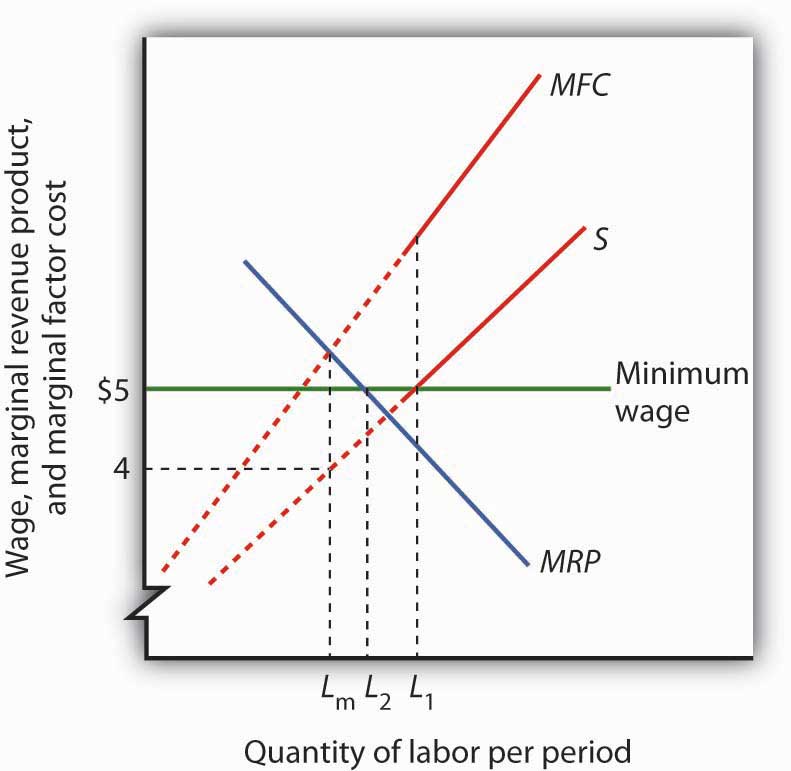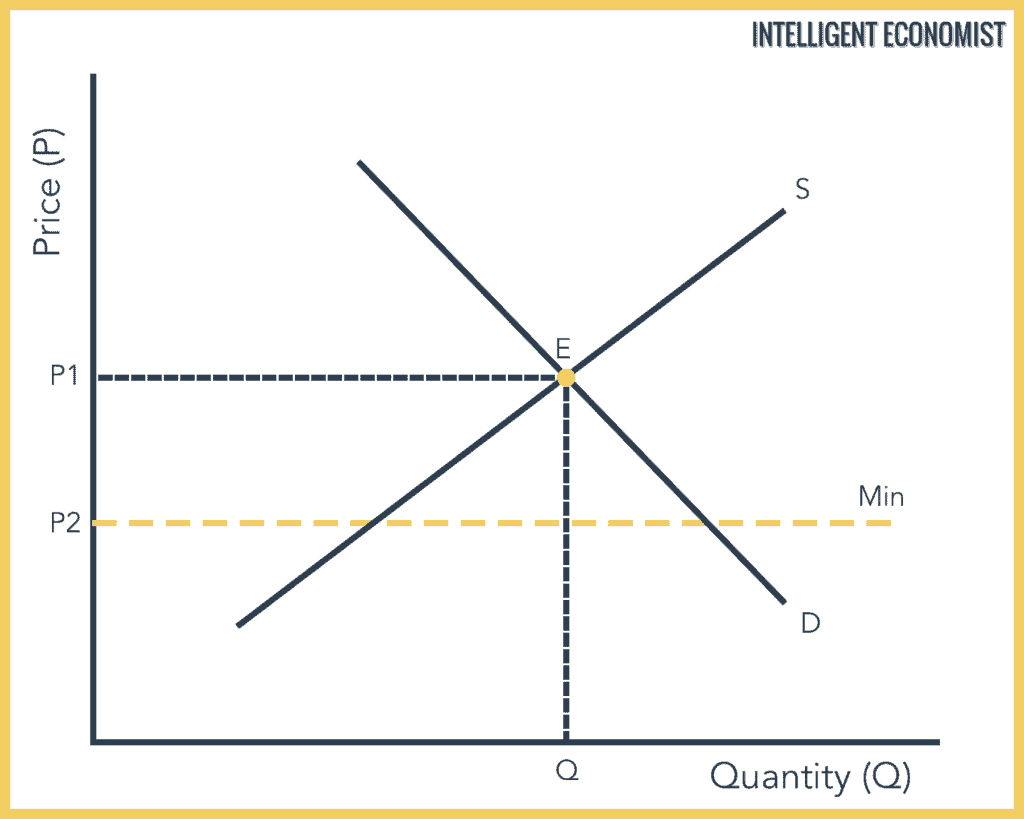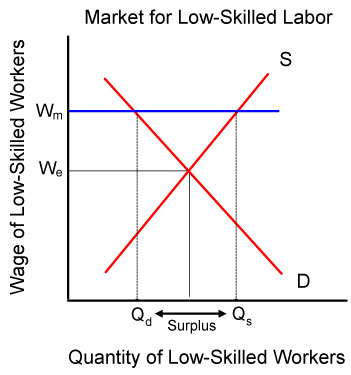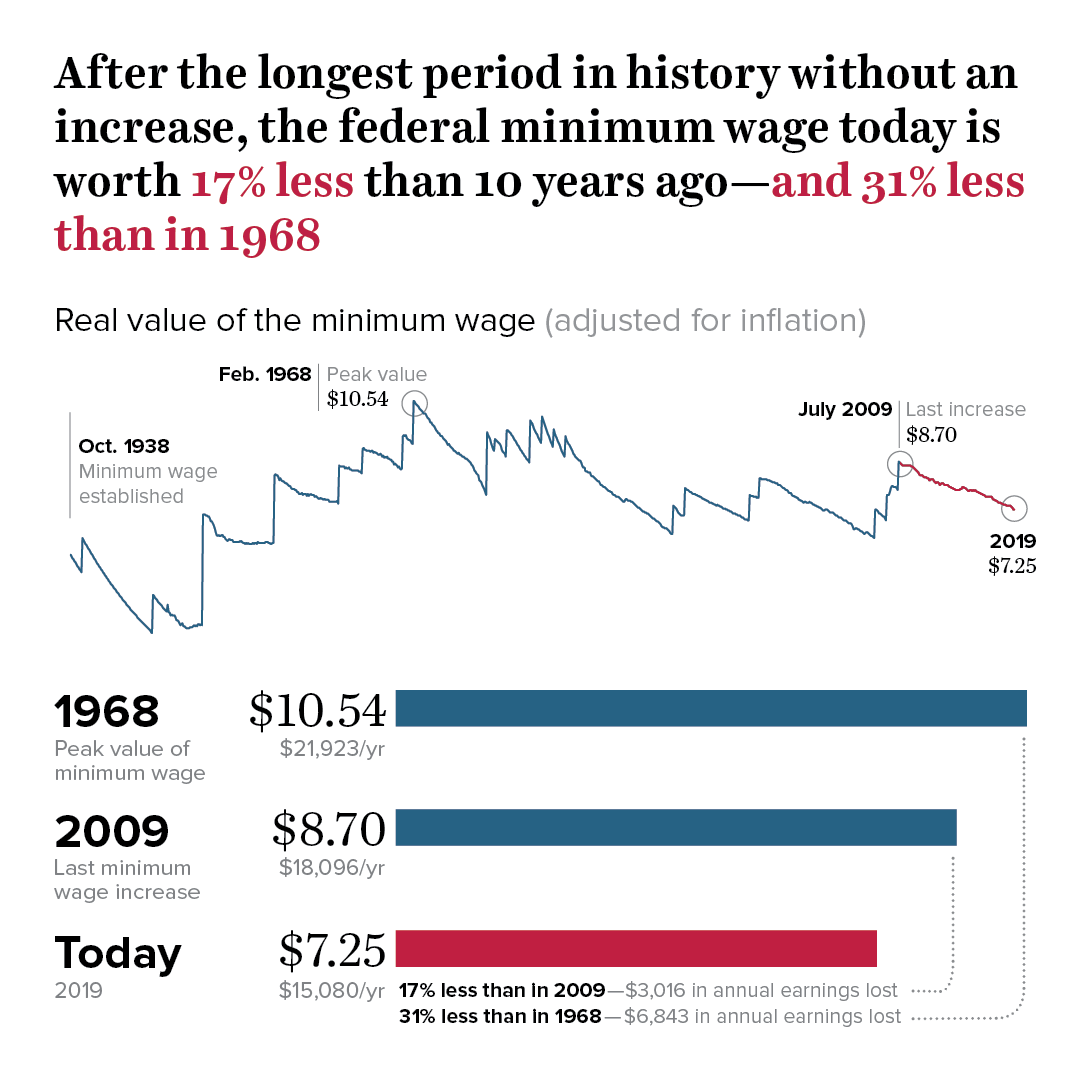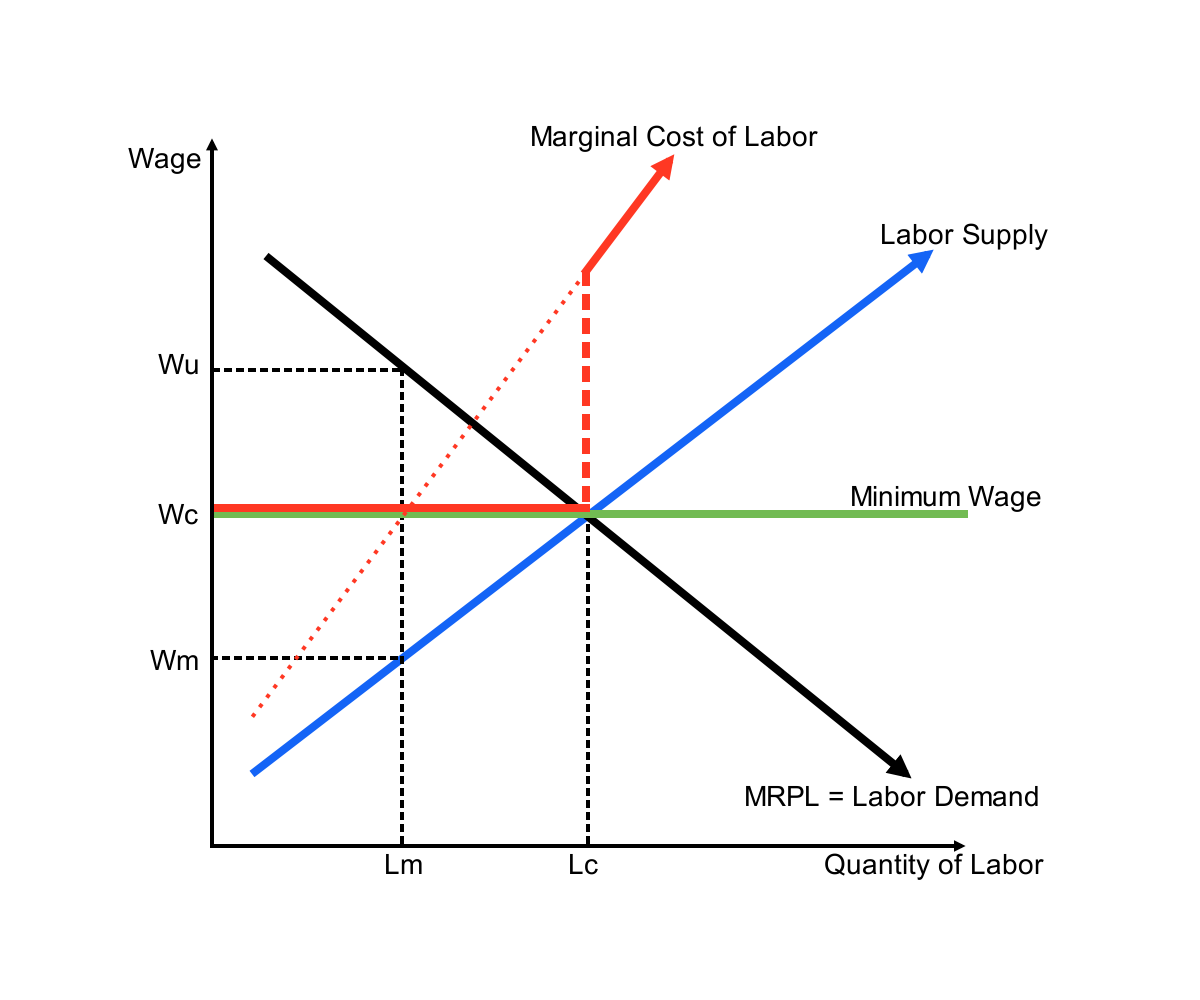Rise In Minimum Wage Price Floor

The median study looking at a broad group of low wage workers estimates an elasticity of 0 04.
Rise in minimum wage price floor. The most common example of a price floor is the minimum wage. For a price floor to be effective the minimum price has to be higher than the equilibrium price. It is for instance too soon to opine on south korea s 25 increase in its minimum wage between 2016 and 2018. The horizontal axis will show the quantity of unskilled labor per period and the vertical axis will show the hourly wage rate for unskilled workers which is the price of unskilled labor.
If minimum wage is set below the market price no effect is seen. Setting price floor will obviously help few workers in getting. Draw demand and supply curves for unskilled labor. That is a 25 percent increase in average wages for a given group due to a minimum wage.
A good example of how price floors can harm the very people who are supposed to be helped by undermining economic cooperation is the minimum wage. The effects of a wage floor can also be felt outside low pay sectors. Unfortunately it like any price floor creates a surplus. For example many governments intervene by establishing price floors to ensure that farmers make enough money by guaranteeing a minimum price that their goods can be sold for.
House of representatives passed an amended version of the raise the wage act of 2019 which would gradually increase the federal minimum wage to 15 by 2025. Because this is the most popular and recognizable example of a price floor we will concentrate on it for the rest of this. In modern western countries labor is the primary recipient of price floors 1 in particular the government imposes a minimum wage making it illegal for an employer to pay a worker less than a certain amount per hour. But if minimum wage is set above market price employers may distribute more work among few workers and terminate rest of the workers in order to not to pay more wage to more workers.
In the case of minimum wage employees are the suppliers of labor the good while businesses become the consumers. A price floor is the legal limit on how low a price may be set for a good. Minimum wage and unemployment. Legislating a minimum wage is commonly seen as an effective way of giving raises to low wage workers.
The cbo also assessed hourly minimum wage increases to 10 and 12 finding more modest effects. For example a hike to 12 would increase wages for up to 11 million workers and leave 300 000 jobless.

